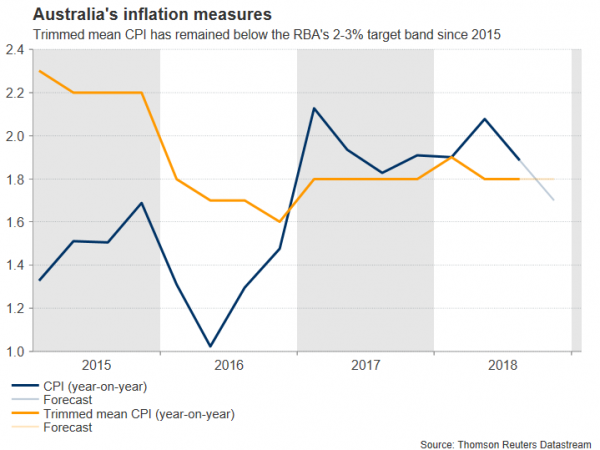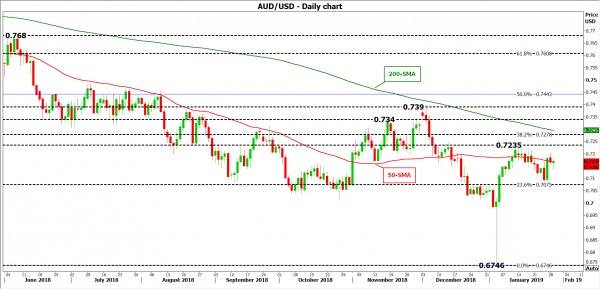Early on Wednesday at 0030 GMT, the Australian Bureau of Statistics will publish inflation numbers for the fourth quarter of 2018. Forecasts are for another soft outcome of 1.7% year-on-year from 1.9% from the previous quarter. On a quarterly basis, the pace of consumer price increases is predicted to remain the same at 0.4% as before. The view however is that even in case of an upward surprise, policymakers are most likely to stand pat on policy until wages show a significant but a sustainable improvement.
In the third quarter, the Australian headline Consumer Price Index (CPI) arrived lower at 1.9% y/y from 2.1% in the previous period. The latest figure was in line with market consensus. In the latest Reserve Bank of Australia (RBA) meeting members discussed that the global economy had remained positive, particularly in the major advanced economies, where growth had remained around or above potential and labour markets had continued to tighten. During the next meeting on February 5, investors are not expecting a rate change but there will be considerable interest in the Governor’s statement and the subsequent communications.
Indeed, December’s employment report surprised markets by showing that the unemployment rate dropped to the desired 5.0%, from 5.1% previously, indicating that the economy is operating close to full-employment. The economy added 21,600 jobs while the number of unemployed decreased by 14,100. Wage growth, however, ticked slightly up to 2.3% year-on-year in the third quarter above 2.1% from the previous quarter and matching market expectations. On a quarterly basis, wages went up 0.6%, the same growth rate compared to the previous quarter and matching market consensus as well. Analysts believe that the trimmed mean and weighted median CPI, which are adjusted for volatile items, are seen steady at 1.8% and 1.7% respectively in yearly terms.
In FX markets, aussie/dollar has been under strong pressure over the last year, losing 11.6% from its value, touching a decade low of 0.6746 at the beginning of the current year. Despite that the RBA mentioned in November that further reductions in unemployment and an inflation rate within the target band of 2-3%, would likely drive interest rates higher. However, the pair remains in negative tendency.
Should inflation beat forecasts, aussie/dollar might extend gains towards 0.7235 and slightly higher towards the 38.2% Fibonacci retracement level of the downleg from 0.8135 to 0.6746, around 0.7278. A bigger surprise in the data, may also open the door for the 0.7340 – 0.7390 resistance area, while if this proves a weak obstacle, traders could turn their attention to the 50.0% Fibonacci of 0.7443.
On the flipside, disappointing figures may increase speculation that the next move in rates could be down, sending the pair below the 0.7100 round level. In this case, immediate support could come from the 23.6% Fibonacci of 0.7075, where the price paused in previous sessions. Lower than that, eyes would turn to the 10-year low of 0.6746.
Yet, investors might prefer to show patience until next week for the release of the RBA interest rate decision.
















